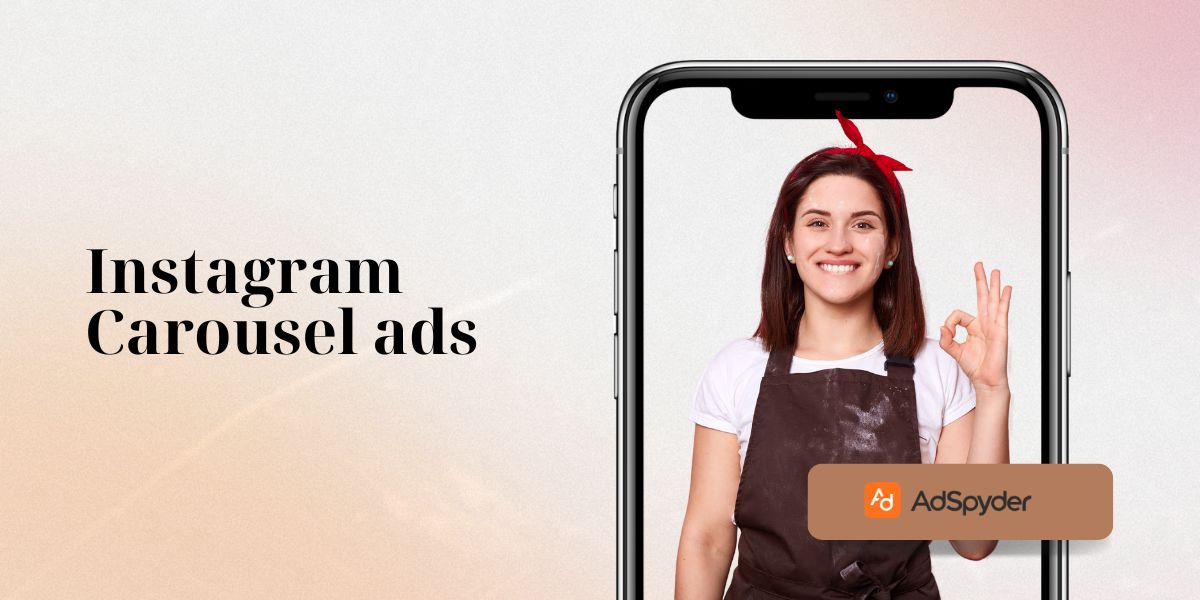The wellness market is booming, with consumers actively pursuing healthier lifestyles, self-care products, and holistic wellness solutions. However, with such fierce competition from established brands and new entrants, a solid advertising campaign is crucial for a wellness brand to make its presence felt. In this three-part guide, we’ll explore the Wellness Brand Advertising Campaigns, such as digital marketing, influencer partnerships, content marketing campaigns, and community outreach tactics to draw loyal customers and sales.
Ready to Elevate your Marketing Strategy?
In contrast to more conventional product marketing, wellness marketing demands an educational balance of trust and emotional connection, alongside a strategic blend. These customers are not searching for products alone—they’re looking for real brands that connect to their lifestyle goals and values.
Creating an Effective Wellness Brand Advertising Campaigns

Designing an effective advertising strategy for well-being brands demands a mix of authenticity, building trust, and an in-depth knowledge of your audience’s lifestyle and goals. Here is a framework to design an engaging and effective advertising strategy:
Getting the Wellness Consumer Mindset
Wellness consumers are actively involved, research-oriented, and community-based. In contrast to impulse buyers, they tend to:
- Ask for transparency about ingredients, sourcing, and ethics.
- Seek brands that share their values of wellness.
- I believe in peer endorsements, influencer ratings, and expert views more than conventional ads.
- Opt for experience-based and informative promotion instead of hard selling.
Establishing Your Wellness Brand’s Unique Selling Proposition (USP)
In preparation for the launch of any advertising campaign, wellness brands should establish their Unique Selling Proposition (USP) to stand out.
Questions to Ask
Asking the right questions is paramount to creating a solid advertising strategy for wellness brands. These questions assist in revealing your brand’s identity, knowing your audience inside out, and creating a campaign that speaks and converts.
- Why is your brand unique compared to others? (e.g., sustainability, value for money, personalisation).
- Who is the target customer for your brand? (e.g., health-oriented millennials, professional individuals, parents).
- What central values does your brand represent? (e.g., plant-based, cruelty-free, clinically supported).
Example USP for Various Wellness Niches
| Wellness Niche | Example USP |
| Organic Skincare | “100% plant-based, cruelty-free, and without synthetic chemicals”. |
| Fitness Supplements | “Clinically proven, containing real food ingredients, and without artificial fillers”. |
| Mental Wellness Apps | “Scientifically-backed, personalised guided meditations for a stress-free life”. |
A well-articulated USP drives messaging in all ad campaigns, guaranteeing brand cohesion and consumer confidence.
Related – Retargeting Ads for Health Products
Online Advertising Strategies for Wellness Brands
Online advertising for wellness brands is all about reaching individuals where they are in their path to wellness—online, curious, and hungry for authenticity. Here’s an extensive explanation of online advertising strategies that work for wellness brands:
Facebook & Instagram Ads for Wellness Awareness
Social media channels such as Facebook & Instagram are great at connecting with health-focused consumers who proactively engage with wellness-related content.
1. Facebook & Instagram Video Ads (Best for Storytelling & Brand Connection)
Here’s how to create high-performing video ads on those platforms:
- Feature genuine people using your products.
- Feature before-and-after changes.
- Example: A skin care brand publishes a 30-second customer testimonial video where the customer speaks about how their skin became better in 4 weeks using the product.
2. Carousel Ads (Ideal for Product Features & Benefits)
Take advantage of Carousel Ads for your advertising strategy:
- These ads are perfect for highlighting multiple product benefits.
Example: A wellness tea brand is utilising carousel ads that are showing slides of:
- Organic ingredient sourcing
- Health benefits (stress relief, digestion support)
- Customer testimonials with a CTA of “Try it now!”
3. Retargeting Ads (What Works Best To Recapture Interested Shoppers)
Let’s discuss what retargeting ads are:
- Target users who visited your website but did not place their orders..
- Example: A supplement brand ran a retargeting ad as follows: “Still thinking about it? Get 10% off if you order in the next 24 hours!”.
Google Ads for High-Intent Customers
Google Ads enables wellness brands to reach high-intent shoppers actively looking for solutions.
1. Google Search Ads (Best for Targeting Health & Wellness Keywords)
Example for better understanding:
- Example: A CBD oil brand advertises with a search targeting searches such as “best CBD for anxiety” with the following headline:
- “Fast-Acting, Organic CBD – Doctor Approved & Lab-Tested”.
2. Google Shopping Ads (Great for Direct Selling of products)
To make it clearer:
- Example: A vitamin company operates Google Shopping Ads that show product pictures, ratings, and prices when consumers search for “immune-boosting supplements”.
Leveraging Influencer & Ambassador Partnerships

Influencer marketing is among the best strategies for wellness brands since customers in this segment believe recommendations from actual individuals more than typical advertisements.
How Influencers Assist Wellness Brands to Grow
Let us deconstruct precisely how influencers assist wellness brands to grow:
- Establish trust: Followers regard influencers as genuine voices of health and wellness.
- Enhance credibility: Support from wellness experts (doctors, nutritionists, trainers) provides weight.
- Increase engagement: Health consumers interact more with actual life testimonies and individual experiences than with straight product promotions.
- Enhance conversions: Individuals are more inclined to purchase when an influencer whom they have faith in utilises and advocates for a product.
Selecting the Appropriate Influencers for Your Wellness Brand
| Influencer Type | Follower Range | Best For | Example |
| Nano-Influencers | 1K – 10K | High interaction, niche communities | A yoga teacher endorsing sustainable mats |
| Micro-Influencers | 10K – 100K | Trust establishment, close-knit community | A nutritionist endorsing a supplement company |
| Macro-Influencers | 100K – 1M | Broad reach, greater awareness | A fitness YouTuber featuring protein powders |
| Celebrity Influencers | 1M+ | Large-scale exposure, brand credibility | A Hollywood actress endorsing a skincare brand |
Best Influencer Campaigns for Wellness Brands
Influencer campaigns are pure gold for wellness brands when they’re strategic, story-told, and genuinely shared between the influencer and their audience. The best ones don’t sell; they educate, inspire, and create community. Here’s a rundown of the influencer campaigns that work particularly well in the wellness space:
1. Sponsored Product Reviews
A sponsored product review is when a company pays or donates a product to a creator in return for their sincere opinions.
- Collaborate with nutritionists, fitness trainers, or wellness bloggers for sincere product reviews.
- Example: A brand of gut health supplements collaborates with a dietitian to develop a blog and Instagram post detailing its digestive benefits.
2. “A Day in the Life” Product Integration
To get this type of campaign to sparkle:
- Make your product part of an influencer’s everyday routine.
- Example: A brand of CBD oil works with a meditation coach who includes a morning self-care ritual involving the oil.
3. User-Generated Content (UGC) & Testimonials
User-generated content (UGC) and testimonials are authentic, down-to-earth, and believably build trust in a way that even the most honed ad cannot emulate.
- Prompts influencers and buyers to share individual experiences with your product.
- Example: A skincare company campaigns #GlowWithUs, in which influencers put up before-and-after photos taken with the product for 30 days.
4. Giveaways & Referral Codes
Let’s dissect how to effectively use it:
- Collaborate with influencers to provide special discount codes or free product giveaways to create interest.
- Example: An herbal tea company partners with a well-being coach for a “Tag a friend to win a free wellness bundle” contest.
Recommended For You – Local Advertising for Wellness Centers
Content-Driven Advertising for Wellness Brands
Content marketing is crucial for wellness brands since customers are extremely research-oriented and prefer education to sales pitches.
Developing High-Value Wellness Content
| Content Type | Best For | Example |
| Blog Articles | SEO traffic, thought leadership | “The 10 Best Adaptogenic Herbs for Stress Relief” |
| How-To Videos | Engagement, education | “How to Use Essential Oils for Better Sleep” |
| Infographics | Social media shares, bite-sized learning | “Daily Superfoods for Gut Health” |
| Ebooks & Guides | Lead generation, brand authority | “The Ultimate Guide to Holistic Skincare” |
SEO & Wellness Blogging for Organic Traffic
Let’s take a step-by-step walkthrough on how to develop an intelligent, sustainable blogging + SEO strategy to drive organic traffic.
- Create blog posts that aim for high-volume, wellness-based search keywords.
- Example: A detox supplement company ranks for “best liver cleanse supplements” by creating extensive guides and comparison content.
Video Marketing for Deeper Engagement
Let’s jump into how to leverage video to spur deeper engagement, greater conversions, and brand affinity in the wellness arena:
- Short-form video (TikTok, Instagram Reels): Bite-sized tips, exercises, and self-care routines.
- Long-form video (IGTV, YouTube): In-depth education, interviews with wellness thought leaders.
Example Video Campaigns for Wellness Brands
Below are some examples:
- A meditation app publishes a “5-minute stress relief breathing exercise” on TikTok.
- A protein powder company publishes High-protein breakfast smoothie recipes on Instagram Reels.
- A brand of supplements has a doctor illustrating “The science behind omega-3 benefits” on YouTube.
Community Engagement & Experiential Marketing for Wellness Brand Advertising Campaigns
Community-based marketing works well for wellness brands because consumers want to be part of a brand’s mission and lifestyle.
Social Media Community Building
The following is a practical guide for creating a thriving community via social media:
- Create private Facebook Groups for customers to share tips, testimonials, and success stories.
- Host a live Q&A with wellness influencers.
- Encourage customers to share their journeys following your branded hashtags.
Hosting In-Person or Virtual Wellness Events
Here’s a guide to help you host impactful wellness events that fit your vibe and objectives:
- Live yoga or meditation sessions (online & in-store).
- Wellness challenges (30-day detox, fitness challenges, mindfulness experiments).
- Pop-up shops & brand partnerships with gyms, wellness cafes, or retreats.
- Example: A clean beauty brand collaborates with a spa on an exclusive “Glow & Relax” skincare retreat.
Loyalty & Rewards Programs
Loyalty and reward programs are clutch at bringing your community back, not only for the benefits but because they feel valued, seen, and a part of something amazing.
- Provide points-based incentives for repeat buys, referrals, and social sharing.
- Example: One vitamin brand rewards customers with “Wellness Points” on every purchase, exchangeable for free products or discounts.
Tracking & Monitoring the Effectiveness of Wellness Brand Advertising Campaigns
![]()
Measuring and monitoring performance metrics are crucial for knowing what’s working and where to optimise ad effectiveness. With wellness products being more considered than impulse purchases, brands must track effectiveness at various stages of the customer journey.
Key Metrics to Track for Wellness Advertising
An effective ad approach is information-centric. Below are the top indicators for well-being brands:
Click-Through Rate (CTR): Tracks how users click an advertisement after it’s been seen by them.
- Why it’s essential: With high CTR, your message and visuals within ad copy, as well as the ads’ targeting, prove to be potent.
- Tip to optimise: Ad copy and call to action (e.g., “Begin Your Well-Being Experience Today” compared to “Shop Today”).
Conversion Rate (CVR): The percentage of users completing a purchase or signing up.
- Why it matters: Low CVR indicates friction at checkout, poor product messaging, or poor targeting.
- Optimisation tip: A/B test landing pages for the highest-performing layout.
Customer Acquisition Cost (CAC): Cost of new customer acquisition with paid advertising.
- Why it matters: High CAC lowers profit margins and future scalability.
- Optimisation tip: Sharpen audience segmentation to target high-intent shoppers.
Return on Ad Spend (ROAS): Calculates the amount of revenue earned per dollar spent on ads.
- Why it matters: A 4:1 ROAS indicates that you make $4 for every $1 spent in ads—a profitability benchmark.
- Optimisation tip: Spend more on successful campaigns and reduce unsuccessful ones.
Engagement Rate: Monitors likes, shares, comments, and views on social media advertisements.
- Why it matters: High engagement indicates that your brand message is connecting with your target market.
- Optimisation tip: Make interactive polls, quizzes, and tutorial videos to increase engagement.
Lifetime Value (LTV): The forecast revenue from a customer throughout their relationship with your brand.
- Why it matters: A high LTV means you can spend more to acquire while still being profitable.
- Optimisation tip: Use subscription models or rewards for loyalty to drive repeat purchases.
Must See – Best Ad Strategies for Fitness Products
Ad Performance Tracking Tools
Following are the best tools (and some pro tips) to aid you in maximising your campaigns:
- Google Analytics (GA4): Monitors web traffic, user activity, and e-commerce conversion.
- Facebook Ads Manager: Reports ad engagement, conversion rate, and return on ad spend (ROAS).
- Google Ads Dashboard: Assists in tracking search & display ad performance for high-intent shoppers.
- Klaviyo / Mailchimp: Monitors email marketing performance (open rates, CTRs, and conversions).
- Upfluence / Grin (Influencer Platforms): Tracks influencer campaign effects on sales.
By regularly monitoring these performance metrics, wellness brands can optimise their advertising campaigns, expand successful strategies, and eliminate wasted ad dollars.
Maximising Wellness Brand Advertising Campaigns for Increased ROI
Maximising wellness ad campaigns for increased ROI is a combination of data-driven decision-making, audience research, effective creative content, and optimal channel choice. Here is a sample strategy to assist in optimising your campaigns:
Targeting the Audience More Effectively With Better Conversions
Wellness consumers are varied, therefore, a one-size-fits-all model will not succeed. Brands need to segment their audience according to interests, demographics, and buying intent.
1. Creating Audience Segments for Personalised Targeting
Here’s a step-by-step guide to building smart, effective audience segments that convert, engage, and establish long-term loyalty.
Fitness Enthusiasts
- To build audience segments for Fitness Enthusiasts specifically:
- Target ads with protein powders, pre-workouts, or energy boosters.
- Example: “Boost Your Workout – 100% Plant-Based Protein”.
Yoga & Meditation Lovers
- To build high-impact, personalised audience segments for this segment:
- Promote essential oils, relaxation teas, or mindfulness apps.
- Example: “Relax & Restore with Organic Adaptogens”.
Busy Professionals
- Provide quick solutions for wellness, such as nootropic supplements or meal replacement shakes.
- Example: “Stay Focused All Day – Brain-Boosting Supplements”.
By tailoring ads for certain audience segments, wellness brands can enhance ad relevance and reduce acquisition costs.
A/B Testing to Optimise Ad Performance
Testing alternate ad elements aids in determining which version performs better.
1. Testing Ad Creatives & Copy
To enable you to test smarter and scale faster:
- Static images vs. video for engagement rates.
- Testing different ad copy versions: “Transform Your Skin Naturally” vs “Vegan Skincare for Radiant Glow”.
- Test varying CTAs: “Get Started” vs “Shop Now”.
2. Testing Offers & Pricing
To utilise it successfully:
- Test “Free Shipping” vs “10% Off” to see what drives more conversions.
- Experiment with tiered discount structures (“Buy 2, Get 1 Free”).
3. Optimising Landing Pages
To increase your conversion rate by optimising your landing page:
- Eliminate redundant checkout steps.
- Include customer reviews & badges (FDA Approved, non-GMO, Vegan).
Must See – Google Ads for Gyms and Supplements
Common Mistakes to Avoid in Wellness Brand Advertising Campaigns

Wellness advertising is a powerful medium, but also saturated and extremely personal, making it simple to stumble without even knowing it. Here are the most common wellness advertising mistakes brands make and how to avoid them if you desire to stand out, establish trust, and convert like a pro:
Using Overcomplicated Messaging
Error: Overuse of scientific terminology without defining benefits in plain language.
Solution:
- Make messaging customer-centric and clear (e.g., “Boosts Immunity – No Fillers or Additives”).
Over-Retargeting & Ad Fatigue
Error: Presenting the same retargeting ad excessively to cause frustration.
Solution:
- Rotate ad creatives every 2–3 weeks.
- Cap frequency on retargeting ads to 3–5 times weekly.
Ignoring Compliance & FDA Regulations
Error: Stating unsubstantiated health benefits (e.g., “Cures Anxiety”).
Correct:
- Compliant wording such as “Supports Relaxation & Stress Relief.
FAQs
Which advertising channel is optimal for wellness brands?
Facebook & Instagram are great for awareness & engagement, and Google Ads is effective for targeting high-intent buyers actively searching for specific wellness products.
What are some ways to reduce your customer acquisition cost (CAC)?
Optimise audience targeting, use Lookalike Audiences, and set up retargeting campaigns to bring back potential shoppers.
Should I do more influencer marketing or paid ads?
Both would work best in combination. Influencer marketing establishes credibility, while paid advertisements offer a reliable, scalable way of acquiring customers.
What can I do to boost ad performance for wellness products?
Work on making ads more engaging using video ads, testimonials, and interactive content (polls, quizzes).
What media ROAS is good for wellness brands in your view?
For wellness brands, a strong ROAS falls somewhere between 3:1 to 5:1; you make $3–$5 for your $1 spent in ads.
How can I ensure that my wellness brand stands out?
Create a strong brand story, provide social proof (in the form of reviews), and be transparent about ingredients.
How do I keep my customers for the long term?
Start loyalty programs, subscription services, exclusive wellness communities, and repeat purchases.
Conclusion for Wellness Brand Advertising Campaigns
Wellness brands are in a very competitive market space where consumers demand authenticity, trust, and authenticated benefits. An effective ad campaign needs to fuse data-based digital marketing, influencer marketing, content-based storytelling, and community building to leave a lasting impression.
Key Takeaways from This Guide
Below are the main takeaways from “The Guide to Building Awareness & Driving Sales”:
- Part 1: We discussed the need to establish a solid brand USP, utilising Facebook, Instagram, and Google Ads, and developing highly effective ad creatives specific to wellness consumers.
- Part 2: We concentrated on influencer marketing, content-led advertising, and developing an active wellness community to ensure long-term credibility and trust.
- Part 3: We touched upon performance monitoring, campaign optimisation strategies, and typical advertising errors to be avoided for long-term growth.
Final Recommendations for Success
All wellness brands running advertising campaigns need to consider the following:
Track and Improve Campaign Performance in Real Time
- Keep an eye on CTR, conversion rates, ROAS, and CAC to maximise the efficiency of your campaigns.
- Experiment across ad creatives, targeting segments and promotional offers to uncover which combinations drive the best results.
Avoid Distortion by Balancing Paid Advertising with Organic & Influencer Marketing
- Scalable Acquisition: Google & Facebook Ads.
- You can engage in trust-based marketing and UGC (user-generated content) by engaging in nano and micro-influencer partnerships.
Inject Fun & Education in Your Content
- The direct sales pitch does not work with wellness consumers.
- Do not forget to offer valuable content (for example, blogs, video guides, and infographics) to make your image similar to an industry leader.
Foster Lasting Loyalty to Customers
- Use loyalty programs, subscription models, and referral discounts to drive customer retention and ask them to promote you.
Ensuring compliance and transparency
- No misleading health claims—use scientifically backed, ethical advertising messaging.
- Focus on ingredient transparency, demonstrate clinical research, and feature customer testimonials to build brand credibility.
Final Thoughts for Wellness Brand Advertising Campaigns
A well-formatted wellness brand ad campaign transcends product sales—it is about trust, community, and relationship-building with customers. Through a combination of paid ads, influencer marketing, and content-driven narratives, brands can establish a long-term growth plan that maintains consumer engagement, loyalty, and active participation in their wellness experience.
By measuring ad performance, optimising messaging, and constantly responding to consumer tastes, wellness brands can scale efficiently and succeed in an increasingly dynamic marketplace. Now’s the moment to implement these strategies and take your wellness brand’s reputation in the market to the next level!




